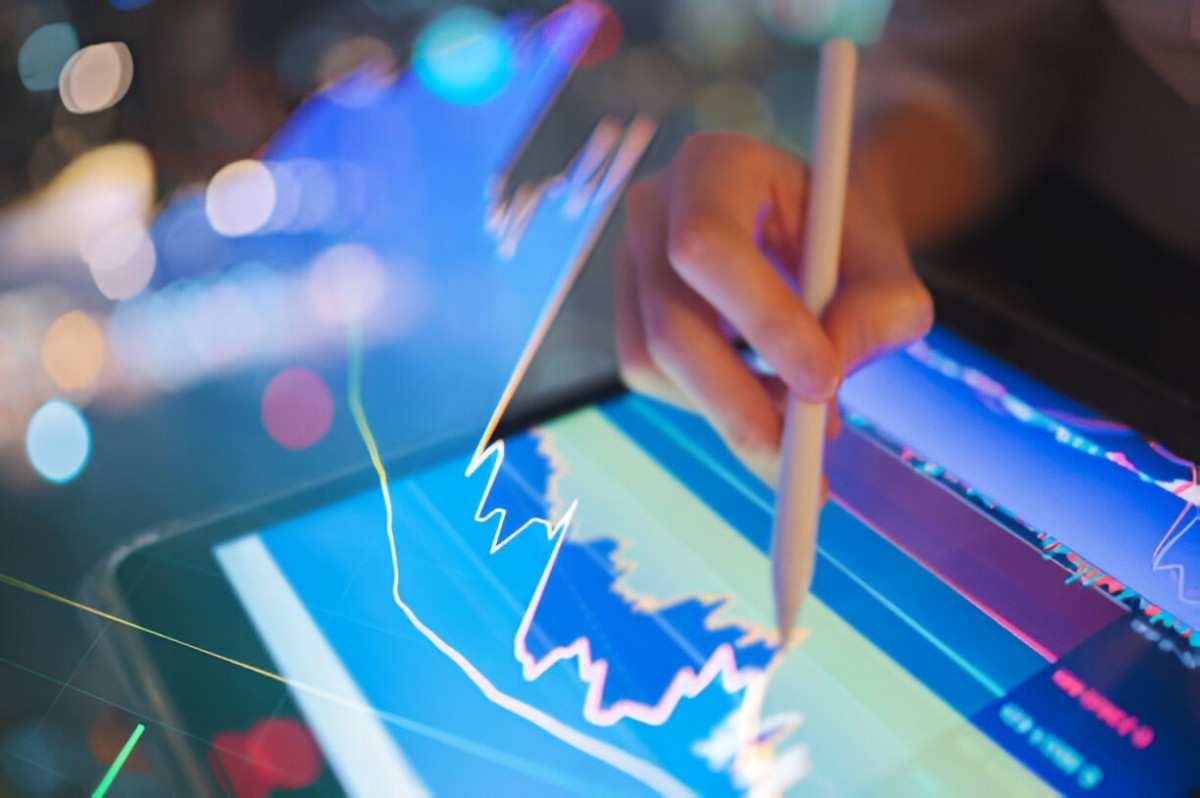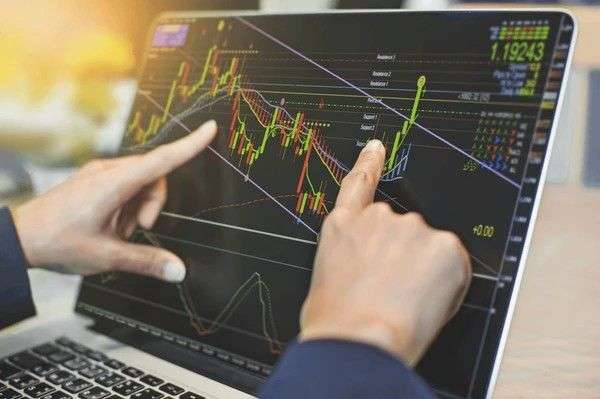When I first began to explore the stock market, I was fascinated by the different methods people used to make trades and profits. One of the most intriguing concepts I came across was algorithmic trading. I learned that algorithmic stock trading, or algo trading, involves using computer algorithms to execute trades based on a set of predefined conditions. Over time, I realized that this approach could be a game-changer in terms of speed, accuracy, and the ability to process massive amounts of data in real time. In this article, I will dive deep into the world of algorithmic trading, explaining what it is, how it works, and how it compares to traditional trading methods. By the end of this article, I hope to provide you with a solid understanding of how algo trading can impact your investment strategy.
Table of Contents
What is Algorithmic Stock Trading?
Algorithmic trading refers to the use of computer programs to automatically execute stock trades based on predefined instructions or algorithms. These algorithms are designed to analyze market data, identify trading opportunities, and place buy or sell orders without any human intervention. Algo trading is often used by institutional investors and hedge funds to manage large portfolios, but individual traders can also leverage this technology to optimize their trading strategies.
The key to algorithmic trading is the ability to process vast amounts of market data quickly and accurately. The algorithms used in algo trading can analyze data such as stock prices, volume, historical trends, and even news sentiment to identify the best times to buy or sell a stock. This level of automation allows traders to capitalize on opportunities that might be missed if they were relying on manual analysis.
How Does Algorithmic Trading Work?
At its core, algorithmic trading operates through a series of mathematical models and pre-programmed instructions that guide the trading process. These models use historical data to predict future price movements, and they can adjust their strategies in real-time as new information becomes available. I will now walk you through the basic steps of how an algorithmic trading system works:
- Data Collection: The first step is to gather relevant market data, such as price movements, trading volume, and financial reports. This data is continuously fed into the system, which uses it to identify patterns and trends.
- Strategy Design: Traders or developers create the algorithms based on their desired trading strategy. For example, some strategies might focus on short-term price fluctuations, while others may rely on long-term trends. These strategies are then encoded into the algorithm, which will use them to decide when and how to trade.
- Order Execution: Once the algorithm has identified a trading opportunity, it automatically places an order. This order can be a market order (to buy or sell at the current price) or a limit order (to buy or sell at a specific price). The system can execute orders in fractions of a second, much faster than any human trader could.
- Real-Time Monitoring and Adjustment: Algorithms constantly monitor market conditions and adjust their strategies in real-time based on new information. For example, if the market becomes volatile, the algorithm might decide to reduce the size of its trades or even pause trading altogether.
Advantages of Algorithmic Trading
As I delved deeper into algorithmic trading, I quickly realized that it offers several advantages over traditional manual trading. These benefits are the reason why algo trading has become so popular, especially among institutional investors. Here are some of the key advantages:
- Speed and Efficiency: One of the most significant advantages of algorithmic trading is the speed at which trades can be executed. Algorithms can analyze data and place orders in fractions of a second, far quicker than any human trader. This speed is crucial in the fast-paced world of the stock market, where opportunities can be fleeting.
- Minimizing Human Error: Emotions can often cloud judgment, leading to poor decision-making in traditional trading. Since algorithmic trading is based on a set of predetermined rules, human error is minimized. The system will execute trades based on the algorithm’s logic, regardless of market sentiment.
- Backtesting: Algorithmic trading allows traders to backtest their strategies using historical data. This means they can simulate how their strategies would have performed in the past and fine-tune them before applying them to live markets. Backtesting helps reduce the risks associated with new strategies.
- 24/7 Trading: Algorithms can run continuously, executing trades even when the trader is asleep or away from the computer. This allows traders to take advantage of opportunities in different time zones and ensure that their strategies are always working in the background.
- Cost Savings: Because algorithms can handle trades automatically, there is less need for human intervention. This reduces transaction costs and the time spent on manual trade execution. Over time, these savings can add up significantly.
Disadvantages of Algorithmic Trading
While the advantages of algorithmic trading are clear, there are also some downsides to consider. I believe it’s essential to look at both sides of the coin before diving into algo trading:
- Complexity: Designing and programming an algorithm can be complex, especially for those without a background in coding or quantitative analysis. Developing an effective strategy requires in-depth knowledge of the market, as well as the ability to create and test algorithms.
- Over-Reliance on Technology: Algorithmic trading systems are only as good as the algorithms they run on. If the algorithm is poorly designed or there’s an issue with the technology, it can lead to significant losses. For example, a “flash crash” in the stock market can be caused by a malfunctioning algorithm that triggers massive sell-offs.
- Lack of Human Judgment: While algorithms can process data quickly, they may miss important qualitative factors that a human trader might catch. For instance, an algorithm may fail to account for geopolitical events or sudden changes in market sentiment that could affect stock prices.
- Market Impact: When large institutional investors use algorithmic trading, it can sometimes lead to market distortions. For example, high-frequency trading algorithms can create large price swings, making the market more volatile. This could potentially harm smaller investors or those using traditional trading methods.
Types of Algorithmic Trading Strategies
When I began to explore algorithmic trading more deeply, I realized that there are various strategies that traders can use. The choice of strategy depends on the trader’s objectives, risk tolerance, and market conditions. Below are some of the most common algo trading strategies:
- Trend Following: This strategy aims to identify and follow market trends. If an algorithm detects that a stock’s price is consistently moving in one direction, it will place trades to capitalize on that trend. For example, if a stock is in a long-term uptrend, the algorithm might place buy orders to take advantage of the rising price.
- Mean Reversion: Mean reversion strategies assume that asset prices will revert to their historical average over time. If a stock is trading above or below its mean price, the algorithm might place trades that bet on the price returning to its average. This strategy works well in stable markets where prices fluctuate around a central value.
- Arbitrage: Arbitrage strategies take advantage of price discrepancies between different markets or assets. For example, if a stock is trading for a lower price on one exchange than it is on another, the algorithm might buy the stock on the cheaper exchange and sell it on the more expensive one, profiting from the difference.
- Market Making: Market-making algorithms create liquidity in the market by placing both buy and sell orders for the same asset. These algorithms profit by capturing the spread between the bid and ask prices. This strategy is commonly used by high-frequency traders and institutional investors.
Key Metrics to Measure Algorithmic Trading Performance
In order to evaluate the success of an algorithmic trading strategy, I learned that traders use several key metrics. These metrics help determine how well the algorithm is performing and whether it needs to be adjusted. Some of the most important metrics include:
- Sharpe Ratio: The Sharpe ratio measures the risk-adjusted return of an algorithmic trading strategy. A higher Sharpe ratio indicates that the strategy is generating more return for each unit of risk.
- Maximum Drawdown: This metric measures the largest peak-to-trough decline in the value of an investment. A lower maximum drawdown indicates that the algorithm is better at avoiding large losses.
- Win Rate: The win rate is the percentage of trades that result in a profit. A higher win rate suggests that the algorithm is making successful trades more often.
- Profit Factor: The profit factor is the ratio of gross profits to gross losses. A higher profit factor means that the algorithm is making more money on winning trades than it is losing on losing trades.
Conclusion
As I reflect on my journey into the world of algorithmic stock trading, I realize how much it has reshaped the landscape of modern investing. By leveraging automation and data-driven strategies, I believe that algorithmic trading offers a powerful way to execute trades quickly, efficiently, and with minimal human error. However, it’s important to remember that no strategy is foolproof. Algorithmic trading has its risks, and it’s essential to continuously monitor and adjust your algorithms to ensure they are working as expected.
For anyone considering diving into the world of algorithmic trading, I recommend taking the time to learn about different strategies, backtest your ideas, and stay informed about the latest developments in technology. With the right knowledge and tools, algorithmic trading can be a valuable addition to your investment arsenal.





